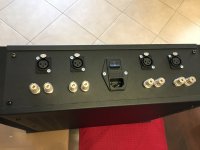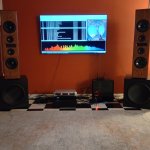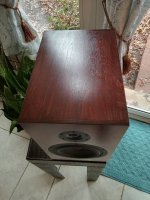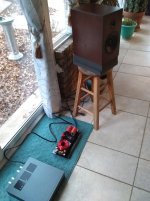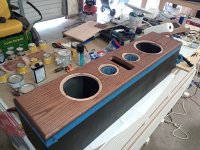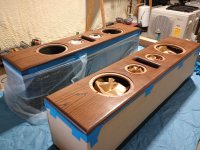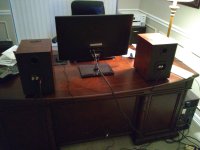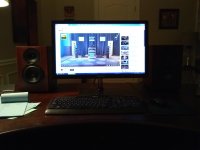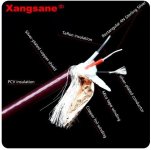All my equipment uses balanced cable. Right now I have stuff that's sensibly priced but with a fair reputation. I'm about to rewire everything everywhere, including my balanced xlr cables and I am not shy with a soldering iron.
I have no problem buying cables that have the connectors already attached, nor is it a problem for me to solder bulk cable. I've been looking at some products that are OCC copper, silver plated and even solid fine silver wire but I'd like to keep the costs below $5 a foot.
Any recommendations?
I have no problem buying cables that have the connectors already attached, nor is it a problem for me to solder bulk cable. I've been looking at some products that are OCC copper, silver plated and even solid fine silver wire but I'd like to keep the costs below $5 a foot.
Any recommendations?
There are many good Shielded Twisted Pair (STP) cables with a braided shield, ones from Belden, Canare or Mogami would be the first choices .
OCC copper, silver plated and even solid fine silver wire bring nothing but price to the party.
OCC copper, silver plated and even solid fine silver wire bring nothing but price to the party.
OCC? You mean OFC?
Just forget OFC and silver, simple copper is the most cost effective always. For instance the few percent of advantage of silver in conductivity can be completely ignored as it doesn't affect signal cable performance, and if it did it's much cheaper to change to somewhat thicker copper than go to silver.
Silver plating is only useful for microwave frequencies BTW, where the skin depth is measured in µm.
Good solid braid will be the best for keeping noise out, but with balanced cable its less critical as the balanced differential signalling does a good noise-rejection job in itself. However having said that if you have RFI issuse a good dense braid can help.
What "stuff" do you have already? Is there anything wrong with it? I'd worry more about connectors myself.
[ just looked up OCC - it is a thing, a thing to ignore with extreme prejudice, its complete snake oil / audio-woo-woo. (Just like OFC, which is useful in cryogenics experiments, not for audio cables!) ]
Just forget OFC and silver, simple copper is the most cost effective always. For instance the few percent of advantage of silver in conductivity can be completely ignored as it doesn't affect signal cable performance, and if it did it's much cheaper to change to somewhat thicker copper than go to silver.
Silver plating is only useful for microwave frequencies BTW, where the skin depth is measured in µm.
Good solid braid will be the best for keeping noise out, but with balanced cable its less critical as the balanced differential signalling does a good noise-rejection job in itself. However having said that if you have RFI issuse a good dense braid can help.
What "stuff" do you have already? Is there anything wrong with it? I'd worry more about connectors myself.
[ just looked up OCC - it is a thing, a thing to ignore with extreme prejudice, its complete snake oil / audio-woo-woo. (Just like OFC, which is useful in cryogenics experiments, not for audio cables!) ]
Last edited:
OCC is a thing, not sure if it's snake oil but there is a plausible story behind it, whether it sounds any different is up to the user.
I use Mogami 2549 (rather neutral) and Mogami 2534 (warmer, more rounded) with gold plated Neutriks.
I used to have the more expensive Neotech OCC cables but these were very bulky and stiff up to the point of it being impossible to line up the connectors in the socket - keep this in mind with XLR!
I use Mogami 2549 (rather neutral) and Mogami 2534 (warmer, more rounded) with gold plated Neutriks.
I used to have the more expensive Neotech OCC cables but these were very bulky and stiff up to the point of it being impossible to line up the connectors in the socket - keep this in mind with XLR!
In ears only listening, it won't sound different.OCC is a thing, not sure if it's snake oil but there is a plausible story behind it, whether it sounds any different is up to the user.
In modern interconnect systems with low output impedances and high input impedances, The central conductors can be made out of copper, OCC copper, silver, silver plated copper, gold, gold plated copper or Copper Clad Aluminum (CCA) there will be no differences. The only limits to small conductor diameter are mechanical.
What is important in RCA interconnects is the shield of the coax. In XLR interconnects, it is the symmetry of the central conductors.
I'm sorry to all of those who are telling me not to waste money on OCC conductors. I've already lost a bet with my brother on the subject. We spent several weekends where I tried to defend the position that the conductor cannot possibly matter if it measures the same. He thought otherwise. And demonstrated it.
He uses cables that are OCC copper. This stands for "Ohno (The last name of the guy who invented the process) Continuous Cast. It is so pure that crystal grain boundaries might not exist in the length you use them as they are often hundreds of feet long. We tried this and maybe 20 other sets and agreed on the differences we heard.
The strongest results were in interconnects, although much of his hardware uses RCA, all mine is balanced. I had to build him a pair of CSS Critons for losing (he paid for parts though.)
Mark - My equipment in this room is such:
2 18" Dayton Ultimax subwoofers, each powered by a 600 watt plate amp.
4 8" Paper woofers (nothing special) powered by a Behringer 400 wpc amp.
4 4" Midranges and 2 Planar tweeters, powered by a 4 channel amp I built with boards from Neurochrome.
A MiniDSP 4x10 doing crossover and time alignment duty.
Several commercial parametric eqs that run in windows or as plugins in Foobar.
This is not my best equipment but my other listening room is being remodeled and there's nothing to see there right now.
I'll try to dig up some pictures from my brother's house if you'd like to see that too.
He uses cables that are OCC copper. This stands for "Ohno (The last name of the guy who invented the process) Continuous Cast. It is so pure that crystal grain boundaries might not exist in the length you use them as they are often hundreds of feet long. We tried this and maybe 20 other sets and agreed on the differences we heard.
The strongest results were in interconnects, although much of his hardware uses RCA, all mine is balanced. I had to build him a pair of CSS Critons for losing (he paid for parts though.)
Mark - My equipment in this room is such:
2 18" Dayton Ultimax subwoofers, each powered by a 600 watt plate amp.
4 8" Paper woofers (nothing special) powered by a Behringer 400 wpc amp.
4 4" Midranges and 2 Planar tweeters, powered by a 4 channel amp I built with boards from Neurochrome.
A MiniDSP 4x10 doing crossover and time alignment duty.
Several commercial parametric eqs that run in windows or as plugins in Foobar.
This is not my best equipment but my other listening room is being remodeled and there's nothing to see there right now.
I'll try to dig up some pictures from my brother's house if you'd like to see that too.
Attachments
Last edited:
Ok, here we go...
Attachments
-
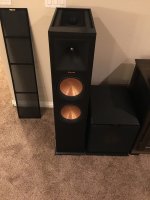 room_003.jpg603.8 KB · Views: 41
room_003.jpg603.8 KB · Views: 41 -
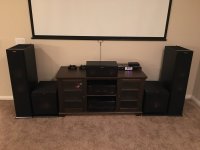 room_002.jpg392.9 KB · Views: 42
room_002.jpg392.9 KB · Views: 42 -
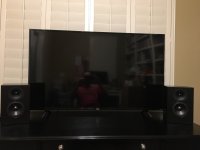 room_001.jpg294.5 KB · Views: 43
room_001.jpg294.5 KB · Views: 43 -
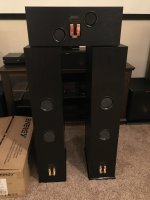 room_004.jpg522.7 KB · Views: 39
room_004.jpg522.7 KB · Views: 39 -
 room_005.jpg375.1 KB · Views: 46
room_005.jpg375.1 KB · Views: 46 -
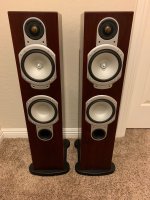 room_006.jpg365 KB · Views: 44
room_006.jpg365 KB · Views: 44 -
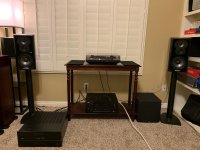 room_007.jpg482.2 KB · Views: 42
room_007.jpg482.2 KB · Views: 42 -
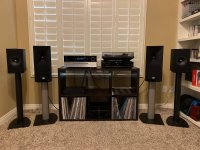 room_009.jpg371.8 KB · Views: 38
room_009.jpg371.8 KB · Views: 38 -
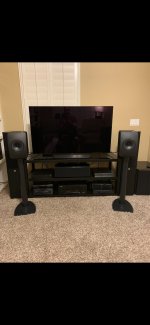 room_010.jpg240.7 KB · Views: 41
room_010.jpg240.7 KB · Views: 41 -
 room_013.jpg376.6 KB · Views: 44
room_013.jpg376.6 KB · Views: 44 -
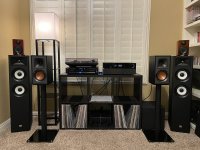 room_012.jpg372.9 KB · Views: 40
room_012.jpg372.9 KB · Views: 40 -
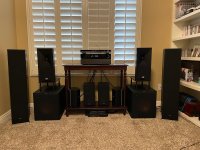 room_011.jpg407.4 KB · Views: 41
room_011.jpg407.4 KB · Views: 41 -
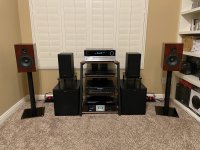 room_014.jpg424.2 KB · Views: 42
room_014.jpg424.2 KB · Views: 42 -
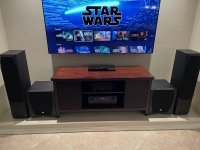 room_015.jpg325.8 KB · Views: 39
room_015.jpg325.8 KB · Views: 39 -
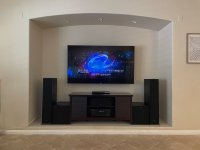 room_016.jpg391.3 KB · Views: 41
room_016.jpg391.3 KB · Views: 41 -
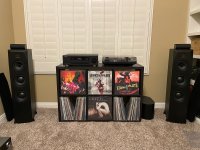 room_017.jpg426.5 KB · Views: 46
room_017.jpg426.5 KB · Views: 46 -
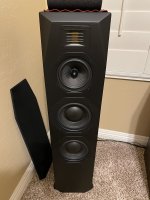 room_020.jpg310.7 KB · Views: 71
room_020.jpg310.7 KB · Views: 71 -
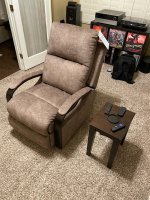 room_018.jpg378.3 KB · Views: 44
room_018.jpg378.3 KB · Views: 44 -
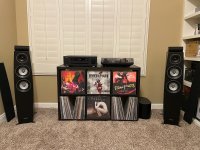 room_021.jpg439.8 KB · Views: 45
room_021.jpg439.8 KB · Views: 45
I use Neotech 3220 (which at least here still costs the same as 4 years ago) and (after a running-in period) I'm happy with it.I've been looking at some products that are OCC copper
Neutik XLR connectors.
Last ones, I promise.
Attachments
-
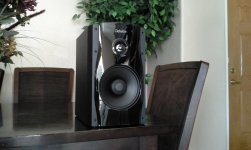 room_023.jpg262.9 KB · Views: 46
room_023.jpg262.9 KB · Views: 46 -
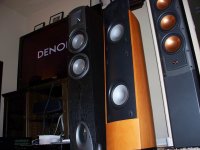 room_027.jpg401.1 KB · Views: 49
room_027.jpg401.1 KB · Views: 49 -
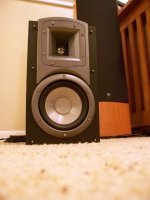 room_026.jpg64 KB · Views: 37
room_026.jpg64 KB · Views: 37 -
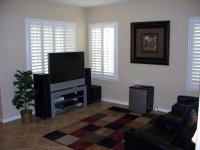 room_025.jpg374 KB · Views: 44
room_025.jpg374 KB · Views: 44 -
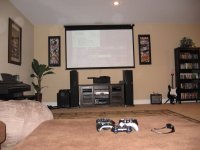 room_024.jpg460.6 KB · Views: 47
room_024.jpg460.6 KB · Views: 47 -
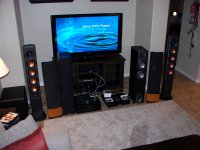 room_028.jpg468.4 KB · Views: 36
room_028.jpg468.4 KB · Views: 36 -
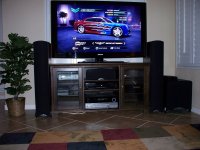 room_029.jpg472.7 KB · Views: 43
room_029.jpg472.7 KB · Views: 43 -
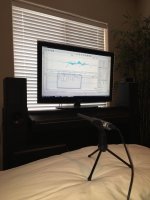 room_030.JPG325.1 KB · Views: 36
room_030.JPG325.1 KB · Views: 36 -
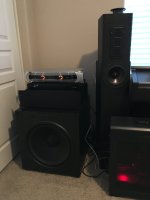 room_032.JPG312.6 KB · Views: 46
room_032.JPG312.6 KB · Views: 46
Two realizations I've had a difficult time accepting after learning the truth on the internet:
1) Way more people have had an acquaintance with my mother than I would have anticipated, and
2) Even if I am right - I am very, very wrong.
1) Way more people have had an acquaintance with my mother than I would have anticipated, and
2) Even if I am right - I am very, very wrong.
I would check where the shield has been contacted to. In many (commercial) cables it is still soldered to pin 1, which is not correct, because all the noise induced in the cable shield is then very likely fed into the signal ground. The shield should be connected to the outer leave of the connector, which makes then a direct electrical connection to the chassis.But more likely there was some overlooked variable in the test setup or protocol.
If I understand you correctly, this proves otherwise. In many cases the outer leave of the connector does not make contact with the chassis.

https://www.ranecommercial.com/legacy/note110.html
https://www.ranecommercial.com/legacy/note110.html
I, and probably many others, would be interested to understand your testing protocol.We spent several weekends where I tried to defend the position that the conductor cannot possibly matter...
No contact with the chassis is then the problem. Neutrik has some connectors (AFAIR HF-type), where the cable shield goes to the outside of the connector (which then should have contact with the chassis), but it also connects then the shield with pin 1 (which IMHO is simply against HF shielding purpose) .If I understand you correctly, this proves otherwise. In many cases the outer leave of the connector does not make contact with the chassis.
View attachment 1369613
https://www.ranecommercial.com/legacy/note110.html
Your figure above: for a three-prong cable, the version on the left would be better than the right one. But XLR cables usually have two wires.
My experience was that removing all the cable shields from pin 1 and soldering them on the sleeve substantially improved sound quality. One of my cheapest and most efficient tuning measures ever. Additionally, the shield was only connected at the sending device, the other end was floating. I followed Ott's recommendations (based on his measurements provided in his book on Electromagnetic Compatibility Engineering).
Individual tastes may differ from widely accepted standards in pro-audio and studio environment, this I understand.
But from what I remember of Ott, his approach is consistent with Rane's paper.
I only have his Noise Reduction Techniques in electronic systems.
P.S. Can't find those HF connectors.
It all very much depends on the situation.
But from what I remember of Ott, his approach is consistent with Rane's paper.
I only have his Noise Reduction Techniques in electronic systems.
P.S. Can't find those HF connectors.
That's exactly how it should be wired, and if one looks at Rane's paper some type of connections are indeed wired without pin 1.Additionally, the shield was only connected at the sending device, the other end was floating.
It all very much depends on the situation.
You are brave to post this on diyaudio, but at least it wasn't ASR, lol. You and your brother have nice equipment and ROOMS(!). I have always liked OCC wires and use it when available. Since you are handy with the soldering iron, I would strongly encourage you to research Xangsane SP-9001AG pure-silver wire and solder on some decent XLR connectors. The signal conductors are rectangular solid-core silver w thin teflon dielectric, and this wire sound quality is extremely competitive with $$$$ audiofool cables out there.I'm sorry to all of those who are telling me not to waste money on OCC conductors.
Attachments
I found the website but please point us to the cable specs, I could not find them.Xangsane
Like these:
https://mogamicable.com/category/bulk/speaker_cable/conventional_configuration/
- Home
- Source & Line
- Analog Line Level
- Your favorite balanced cables?
